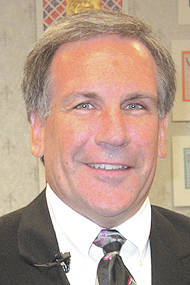
When I was a school superintendent I, like my peers, regularly received missives from the Ohio Department of Education (ODE) informing us about the latest foolishness coming from that office or similar absurdities being contemplated in the Ohio Legislature.
Since retirement made that an aggravation I no longer needed, one of the best gifts I gave myself was removal from the ODE email chain. However, I still occasionally receive messages from friends or former peers with a link to an ODE or legislative initiative, usually with the caveat, “wait until you read this latest nonsense.” Actually, a more descriptive term than “nonsense” is often used, but this is a family newspaper.
Invariably, every story includes an ODE or legislative epistle that can be filed under the category of “some things never change.” Reading them is akin to watching a train wreck. You know it’s going to be bad, but you just can’t look away.
The latest ODE boondoggle is its “Graduation Requirements and High School Redesign Task Force.” First of all, any time a group defines itself as a “task force” (or “think tank” for that matter), run the other direction … fast. Because it is usually code for “blah, blah, blah.”
Having said that, one would think if the people who comprise these committees knew anything, they wouldn’t have to convene new ones every single year to address the same issues previous committees have supposedly solved.
So, what is there to criticize about the “Graduation Requirements and High School Redesign Task Force’s” work?
Where do we begin?
First of all, according to the meeting notes, committee members actually spent time debating whether to use the term “proficient” or “competent” when describing student achievement.
Now, if that discussion lasted more than two seconds, it was a waste of time. In other words, for God’s sake, just pick a word. It doesn’t matter, and there are far more important things to worry about.
Another ridiculous conversation considered the titles we should use in education. Should kids be called “customers” instead of “students,” and should we refer to guidance counselors as “life coaches?”
For a task force on redesigning education to actually waste time on these kinds of discussions tells you all you need to know about bureaucratic task forces. Speaking from experience, sitting in meetings like this is infuriating because they are so meaningless.
Is it any wonder why they accomplish nothing?
The task force also suggested it would be nice to survey educators about successful initiatives they have implemented that have improved their schools. Surveying people outside the committee is a time-honored tradition, because apparently no one actually on the committee knows anything. So, they need to ask others for meaningful input.
This survey madness serves a couple of other purposes. First, when the committee’s final results are released, members can claim they were compiled “with input from educators.” That sounds really good.
Second, since conducting surveys and compiling and distributing the results takes time, the public is given the illusion that the committee spent far more time than it actually did looking for solutions. It is a ploy committees like this use to give the illusion of legitimacy.
But, members of a committee like this should have already spent years talking to experts in the field or be familiar enough with the research themselves to engage in intelligent discourse without the need to ask outsiders what they think.
By the way, the most important strategy a school district can employ is being lucky enough to sit in a community with predominantly middle and upper income families comprised of well-educated adults who provide their children with a stable environment while valuing and supporting the importance of being well educated.
You don’t have to take my word for it. Look it up.
But, apparently, this is news to these task force members.
Still another fascinating debate this task force had was the importance of applying seals to high school diplomas based on test performance. Now, one can only assume that by “seals” they mean stickers, which will apparently connote some super-secret information to anyone looking at the diploma.
Of course, in decades of employing people, not a single time did I ever so much as lay eyes on a prospective employee’s high school diploma. Not once. In fact, my own diploma has been safely tucked in a storage bin for almost 50 years. But, I’m sure whatever stickers the task force chooses will make the diploma look really cool when it is tucked away wherever people stow their high school diplomas these days.
So, to review, a task force whose goal, we are told, is to redesign schools as we know them, has spent its time 1.) debating whether to call kids “students” or “customers,” 2.) deciding whether to describe a student’s work as “competent” or “proficient,” and 3.) discussing what kinds of stickers to affix to high school diplomas.
Meanwhile, task force members do not focus on pertinent issues like why kids in poverty tend to perform more poorly than kids who come from wealthier environments; how poor nutrition, prenatal care, neglect, stress, and abuse impact a child’s brain development; how parental addictions impact children; how childhood literacy actually develops; how parents should interact with their children to best nurture them; and any one of dozens of other factors that impact children’s success.
In other words, they ignore what matters … again.
Tom Dunn is the former superintendent of the Miami County Educational Service Center.


